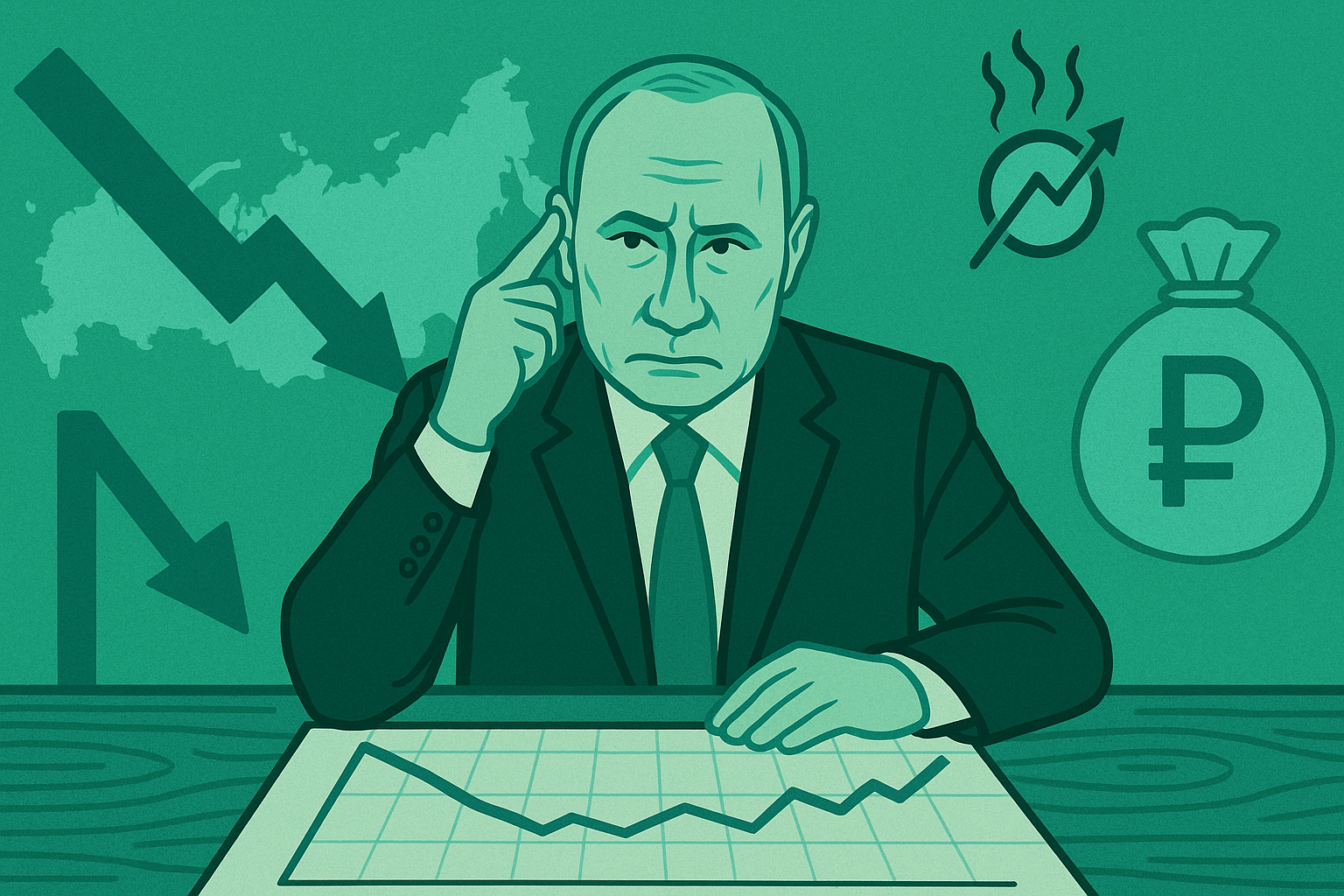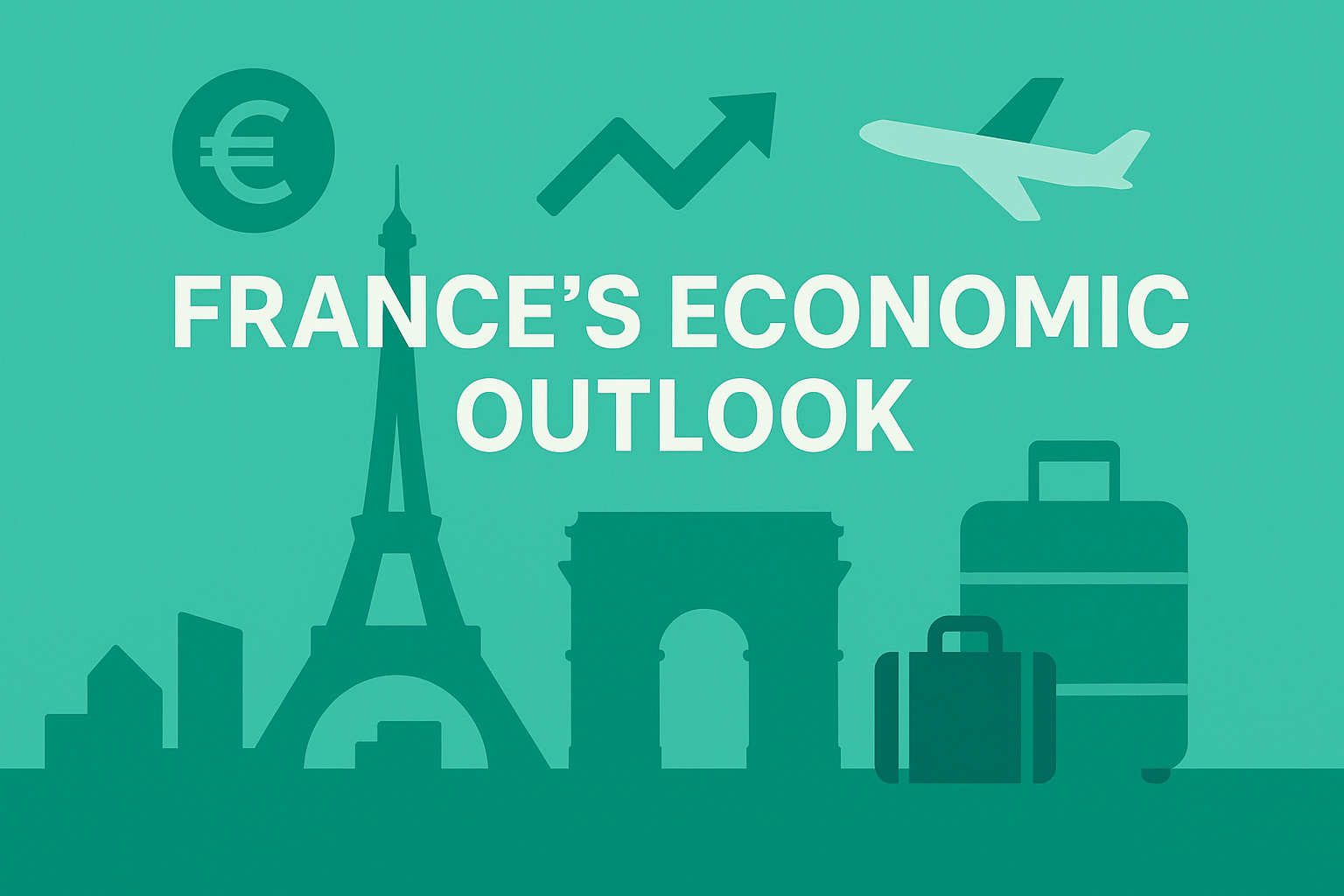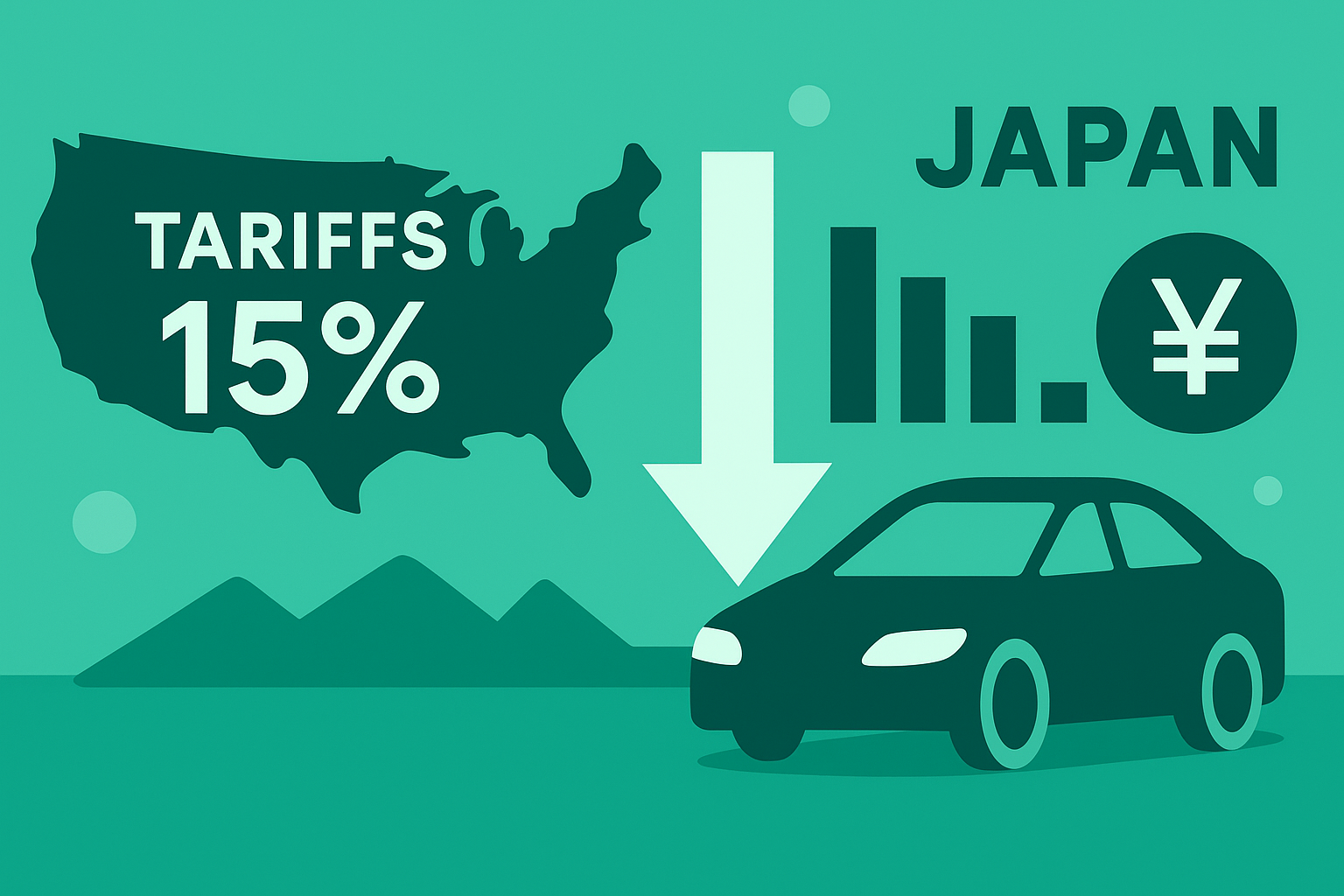Wrote By :Global Economist 2025/09
President Putin says Russia is intentionally slowing economic growth to fight inflation, dismissing recession fears. What this means for sanctions, markets, and global trade.
President Vladimir Putin has declared that Russia is intentionally restraining its economic growth as part of a strategy to contain inflation, arguing that despite two consecutive quarters of GDP decline, the country has not entered a recession.
- Introduction: Russia’s Economic Balancing Act Under Pressure
- Putin’s Statement: Defending Deliberate Deceleration
- Economic Data: The Reality Behind the Rhetoric
- Policy Implications: Walking the Tightrope
- Global Impact: Energy Markets and Sanctions Effects
- Comparisons: Russia’s Unique Approach
- Long-term Sustainability and Outlook
- Conclusion: Strategic Patience or Economic Necessity?
Introduction: Russia’s Economic Balancing Act Under Pressure
Russia faces an unprecedented economic challenge in 2025. After experiencing robust 4.3% GDP growth in 2024 driven by massive fiscal spending on military production and social programs, the economy now confronts the dual pressures of persistent inflation and Western sanctions that have intensified throughout the year. The Central Bank has maintained prohibitively high interest rates at 17% (down from 21% earlier this year) to combat inflation that peaked above 8% – more than double the 4% target.
Putin’s September 18 statement represents a deliberate reframing of Russia’s economic narrative, positioning what many economists consider concerning slowdown indicators as strategic policy choices. This approach comes as Western sanctions have escalated dramatically, with the United States imposing sweeping new measures in January 2025 targeting Russia’s energy sector, including major oil producers Gazprom Neft and Surgutneftegas, and sanctioning 183 oil tankers.
Putin’s Statement: Defending Deliberate Deceleration
“As for the decline from more than 4% GDP growth: this is not a decline, it is a deliberate action. It is a slowdown in growth in exchange for curbing inflation and maintaining macroeconomic stability,” Putin stated during a televised meeting with parliamentary leaders on September 18.
The Russian president’s comments came in response to a Russian Central Bank report showing two consecutive quarters of GDP decline in quarter-on-quarter terms, which aligns with the technical definition of recession. However, Putin dismissed these concerns, emphasizing labor market resilience as evidence that Russia remains “far away from recession.”
“I think that a recession is still a long way off, and the labour market reflects this,” Putin said, echoing Central Bank Governor Elvira Nabiullina’s stance. This messaging represents a coordinated effort between the Kremlin and monetary authorities to maintain confidence while implementing contractionary policies.
Putin also acknowledged the delicate balance required, noting the importance of not “overcooling” the economy entirely and the need to link budget, tax, and monetary policy measures to stimulate growth when appropriate.
Economic Data: The Reality Behind the Rhetoric
GDP Performance and Projections
The data tells a more complex story than Putin’s optimistic framing suggests. Russian GDP grew by just 1.1% year-on-year in the second quarter of 2025, a dramatic deceleration from the 4.1% growth recorded in the same period last year. First quarter growth was also modest at 1.4% year-on-year.
Economic forecasts for 2025 have been consistently revised downward, with most analysts now projecting growth between 1.0% and 1.5%, while the IMF forecasts even lower at 0.9%. Finance Minister Anton Siluanov has told Putin that growth projections for next year have been reduced from 2.5% to 1.5%, with some estimates closer to 1.2%.
Inflation Dynamics
Inflation remains stubbornly high at 8.1-8.2% as of September 2025, well above the Central Bank’s 4% target. The Bank of Russia noted that current seasonally adjusted price growth averaged 6.3% in annualized terms during July-August, affected by utility rate adjustments and fuel price increases, though moderated by seasonal food price declines.
This inflation surge has been driven by labor shortages, rising salaries, and the domestic industry’s inability to expand production to meet government-fueled demand. The economic overheating stems directly from the Kremlin’s departure from traditionally conservative fiscal policy in response to war needs and sanctions pressure.
Labor Market Resilience
Despite economic deceleration, unemployment remains at record lows around 2.3%, and wages continue rising, though more slowly than in 2024. However, wage growth still outpaces labor productivity gains. Surveys show the share of enterprises experiencing labor shortages continues to shrink, though the labor market remains tight.
Policy Implications: Walking the Tightrope
Monetary Policy Strategy
The Central Bank’s aggressive monetary tightening culminated in a key rate of 21% before recent cuts to 17% in September 2025. Analysts expect further gradual reductions to an average of 19.0% for 2025 and 13.2% for 2026, but rates will remain well above neutral levels.
Central Bank Governor Elvira Nabiullina has faced intense pressure from politicians and industrialists but maintained her conservative stance, viewing high rates as essential to prevent a return to double-digit inflation. The Bank has indicated that further policy adjustments depend on budget parameters and fiscal policy alignment.
Fiscal Policy Challenges
Russia’s state finances show growing strain, with the federal budget deficit reaching 4.88 trillion rubles ($61.1 billion) between January and July 2025, already exceeding the government’s full-year target. Reports suggest the government is considering raising the value-added tax (VAT) rate from 20% to 22% to control the deficit, contradicting Putin’s previous assurances against tax increases.
The government faces a difficult choice: reduce fiscal support and risk deeper economic contraction, or maintain spending and see inflation return. Defense spending and social commitments limit room for cuts, creating a fiscal trap.
Global Impact: Energy Markets and Sanctions Effects
Energy Sector Under Pressure
The January 2025 U.S. sanctions marked a significant escalation, directly targeting major Russian oil companies for the first time and sanctioning 183 vessels in Russia’s “shadow fleet”. These measures could reduce Russia’s oil exports by 0.5 to 1 million barrels per day in the short term and widen discounts for Urals crude.
Despite sanctions, Russia continues exporting significant volumes through its shadow fleet, with monthly fossil fuel export revenues averaging around 585 million euros per day in recent months. However, revenues have declined, and enforcement of the G7+ price cap could have reduced Russia’s oil export revenues by 11% since implementation.
International Market Response
Any reduction in Russian oil exports could increase global prices, potentially stimulating U.S. energy production and exports, particularly if combined with intensified sanctions on Iran and maintained measures on Venezuela. However, gradual approaches have allowed Russia to adapt, as demonstrated by its resilience from 2022 to 2025.
European countries remain significant buyers of Russian energy, with EU imports accounting for approximately 10% of Russia’s top five fossil fuel purchasers, primarily through LNG and pipeline gas exemptions.
Comparisons: Russia’s Unique Approach
Contrast with Traditional Economic Management
Russia’s strategy of deliberately sacrificing growth to combat inflation represents an unusual approach in modern economic policy. Most developed economies rely on gradual monetary tightening and fiscal coordination rather than accepting technical recession as policy tools.
The “balanced growth path” that Russian policymakers euphemistically describe essentially means accepting anemic growth of 1-2% compared to the 4.3% achieved in recent years. This contrasts sharply with how economies like the United States or European Union manage inflation through more gradual adjustments.
Sanctions-Driven Economic Adaptation
Russia’s economic defense has relied on massive fiscal stimulus while actively preventing capital from leaving the country through controls and high domestic interest rates. This approach differs fundamentally from how sanctioned economies typically respond, where capital flight and currency depreciation usually dominate.
The Kremlin’s strategy has proven more resilient than initially expected, though it has required fundamental restructuring of trade relationships and logistics networks, particularly the costly “pivot to the East” that has not fully replaced lost European markets.
Long-term Sustainability and Outlook
Economic Risks Ahead
The main gamble is that economic cooling won’t trigger a prolonged recession. Reduced spending or austerity measures could further slow growth and wage increases at a time when sanctions, low oil prices, and property rights challenges discourage private investment.
If growth doesn’t recover even with low inflation, military production would claim a growing share of the Russian economy, creating structural imbalances. Conversely, if the government doesn’t reduce fiscal support, high inflation risks returning.
Geopolitical Implications
Russia’s acceptance of slower growth to maintain macroeconomic stability reflects broader strategic calculations about sustaining its conflict with Ukraine while preserving domestic stability. For the Kremlin, a brief period of low growth is tolerable, though combined with lower oil prices, it would reduce fiscal revenues needed for military spending.
The strategy’s success depends on whether Russia can maintain this delicate balance while Western sanctions continue evolving. The economy’s adaptation since 2022 has exceeded many expectations, but sustainability questions remain.
Conclusion: Strategic Patience or Economic Necessity?
Putin’s framing of Russia’s economic slowdown as a deliberate strategy rather than policy failure represents sophisticated crisis management but masks significant underlying challenges. While the president claims that inflation-fighting measures are showing results with trajectories below government forecasts, the broader economic picture reveals an economy under intense strain.
Bottom Line: Russia’s “deliberate” growth slowdown reflects the limited options available to an economy managing war spending, international sanctions, and persistent inflation simultaneously. While the strategy may maintain short-term stability, its long-term sustainability depends on factors largely beyond domestic control – including oil prices, sanctions evolution, and the duration of geopolitical tensions.
The success of this approach will ultimately be measured not just by inflation metrics, but by Russia’s ability to maintain fiscal capacity for strategic priorities while preserving enough economic dynamism to prevent prolonged stagnation. For global markets, Russia’s strategy signals continued uncertainty in energy markets and validates the gradual effectiveness of coordinated Western sanctions pressure.
Sources:
- Reuters, September 18, 2025 – “Putin says Russia is curbing economic growth to control inflation, recession far”
- TASS, September 18, 2025 – “Russia deliberately slows economic growth to curb inflation”
- Bank of Russia, September 12, 2025 – Key Rate Decision
- Centre for Research on Energy and Clean Air – Monthly Russian Fossil Fuel Export Analysis
- U.S. Treasury Department – Sanctions announcements
- Various economic analysis sources and Ce


